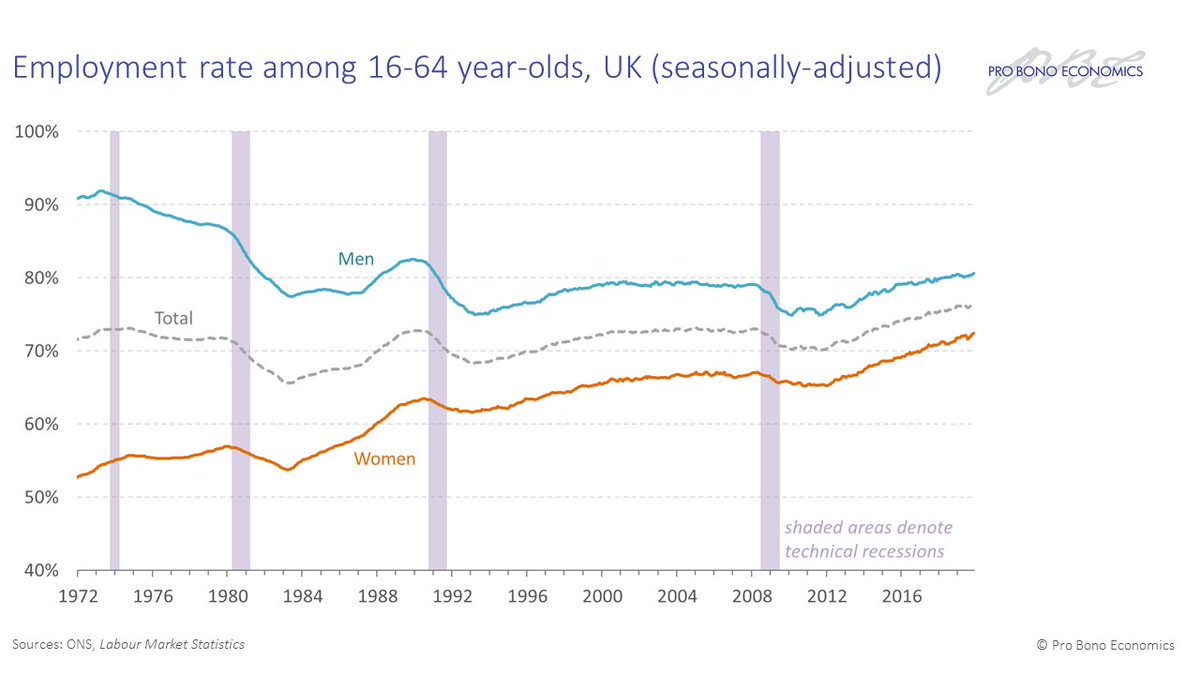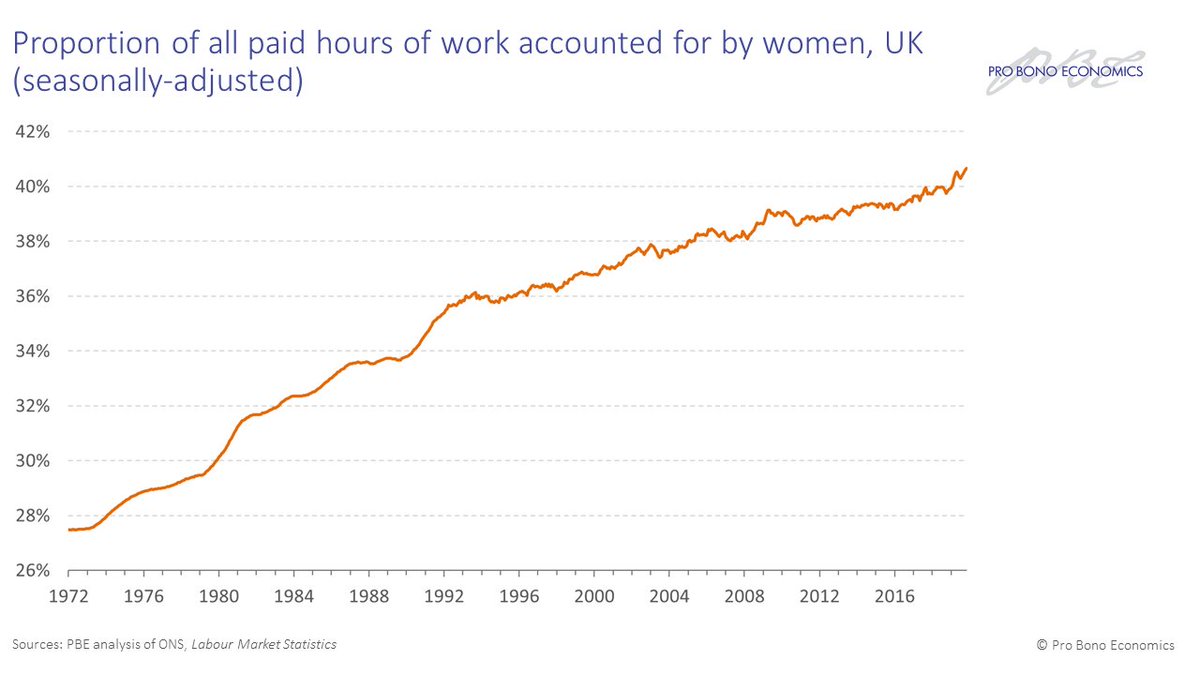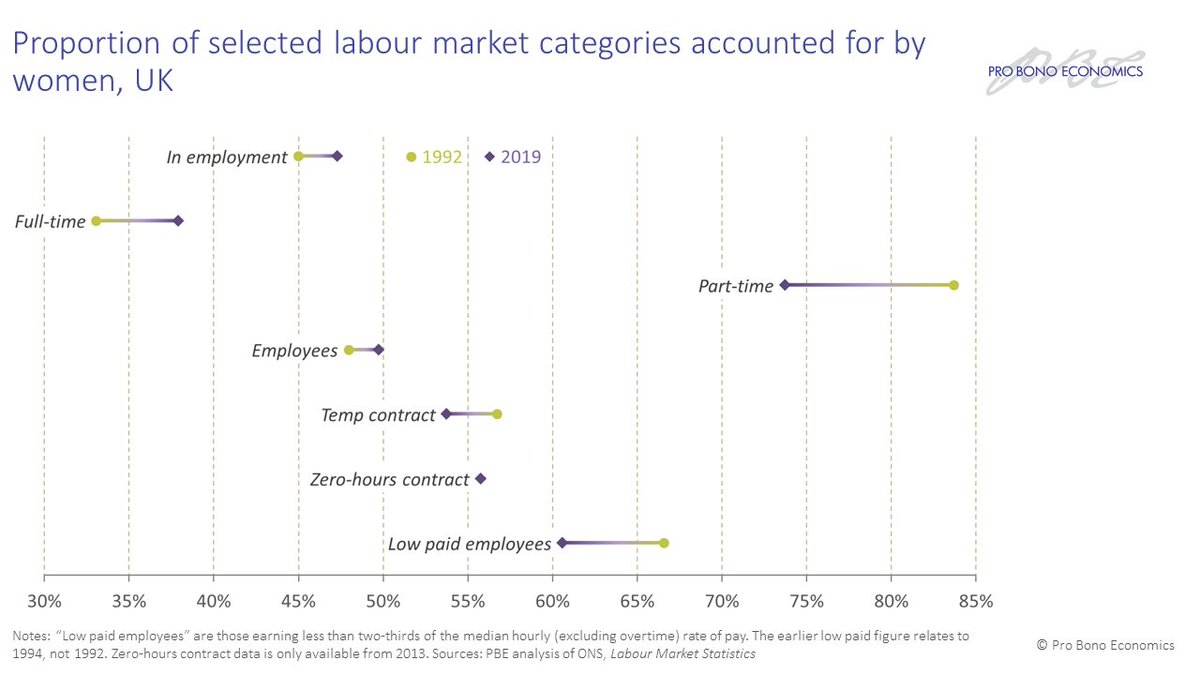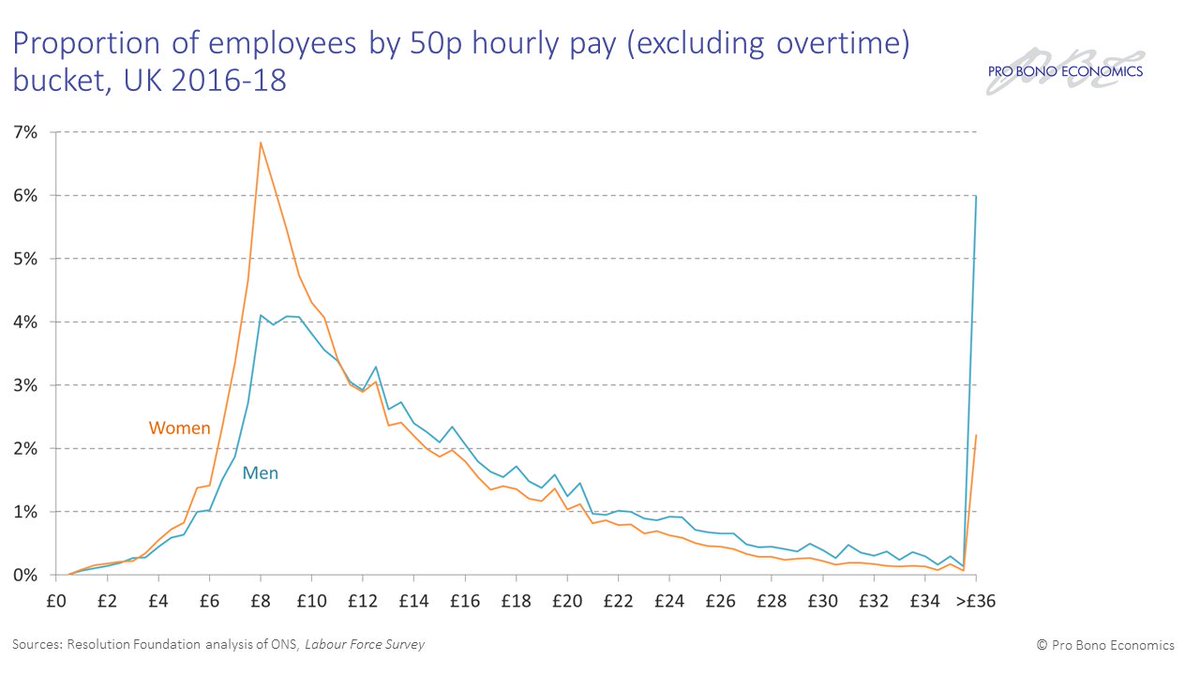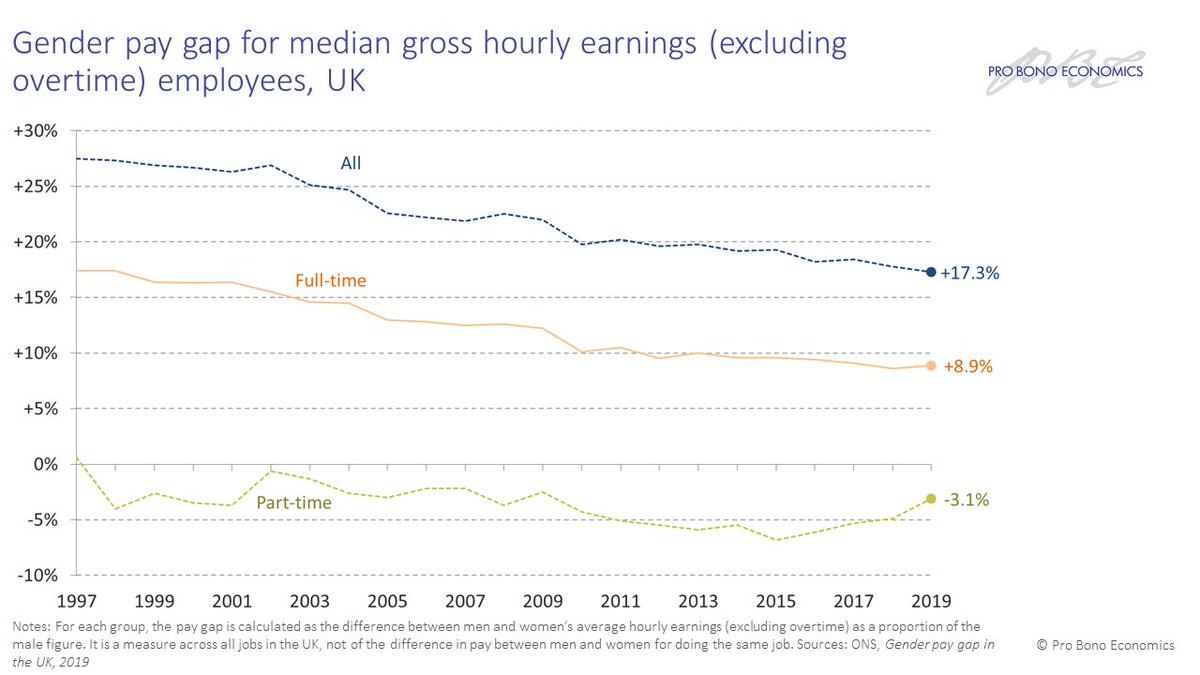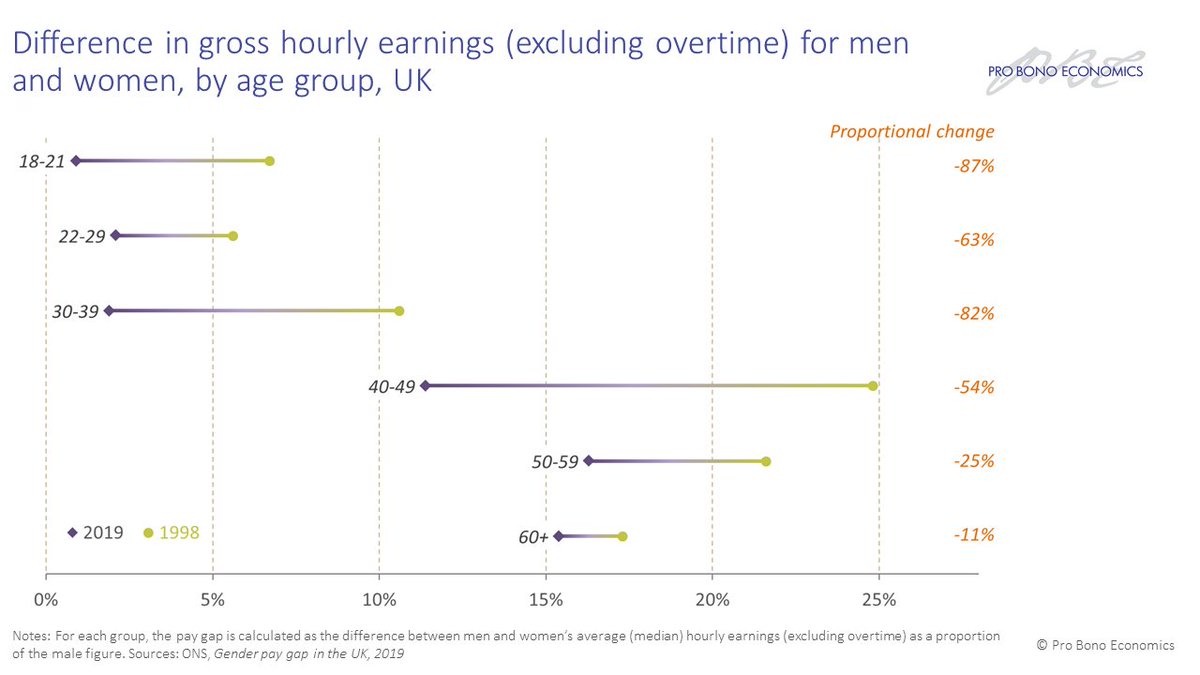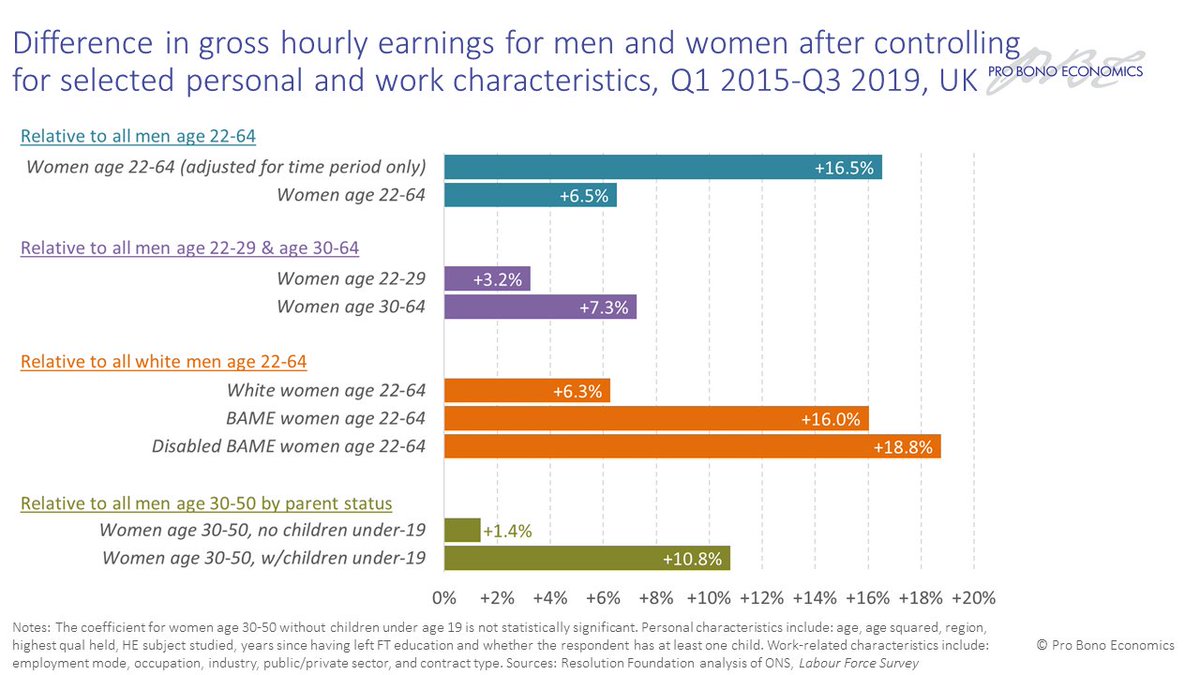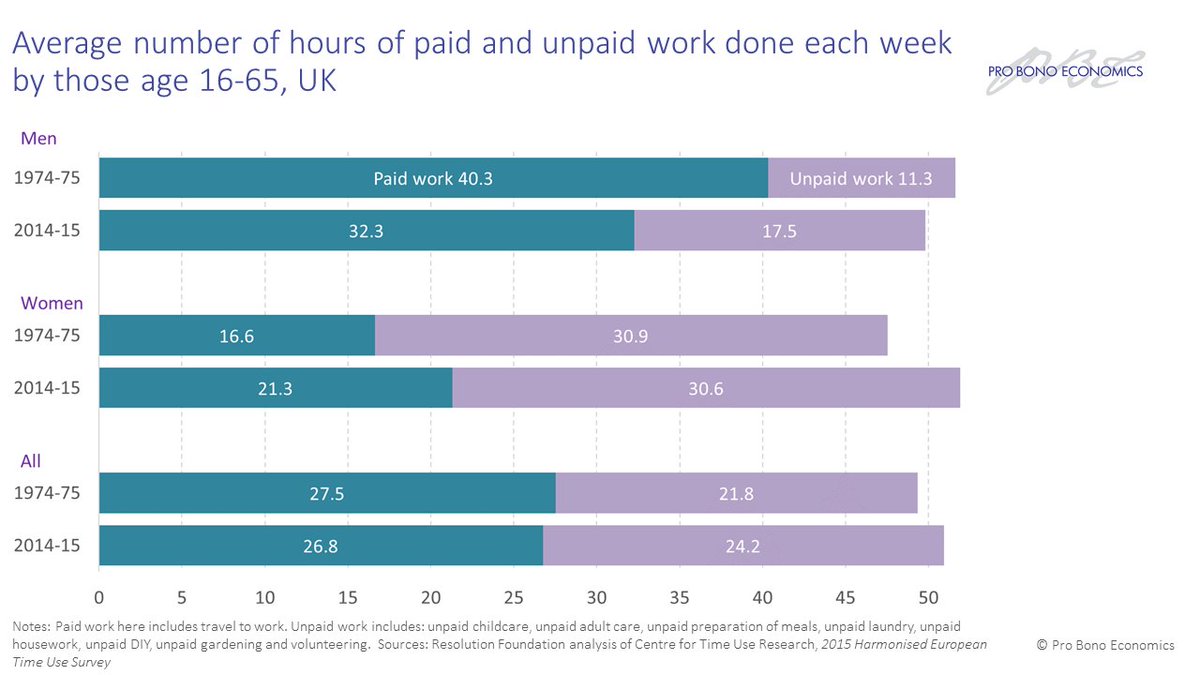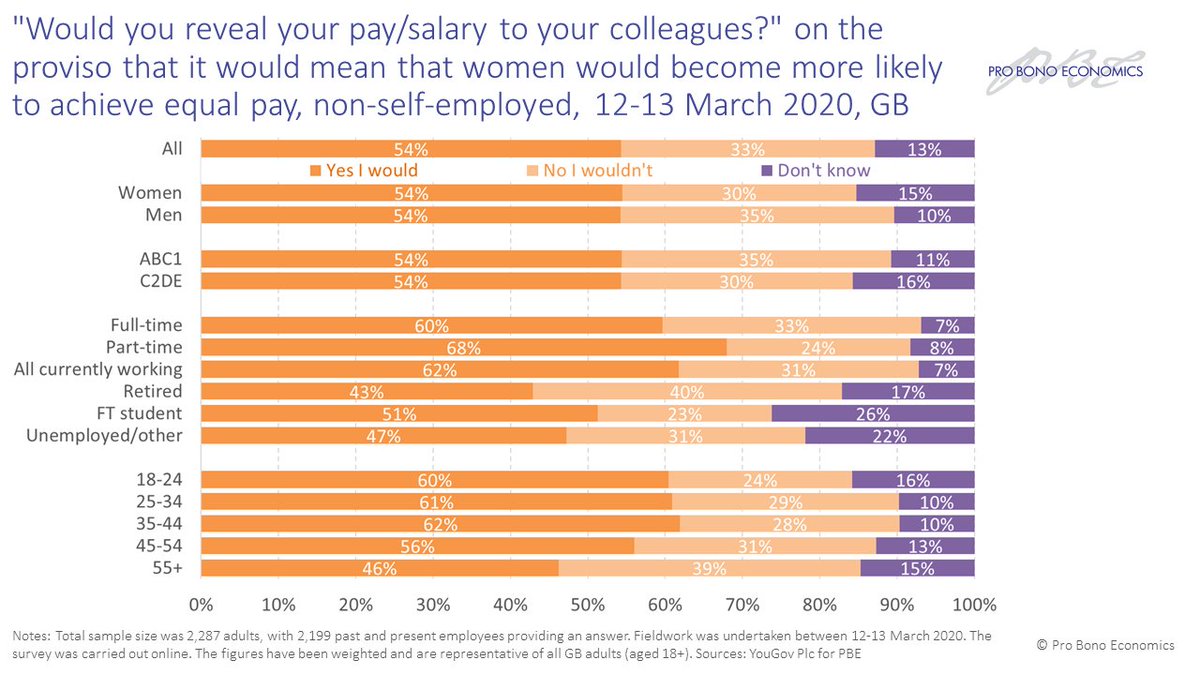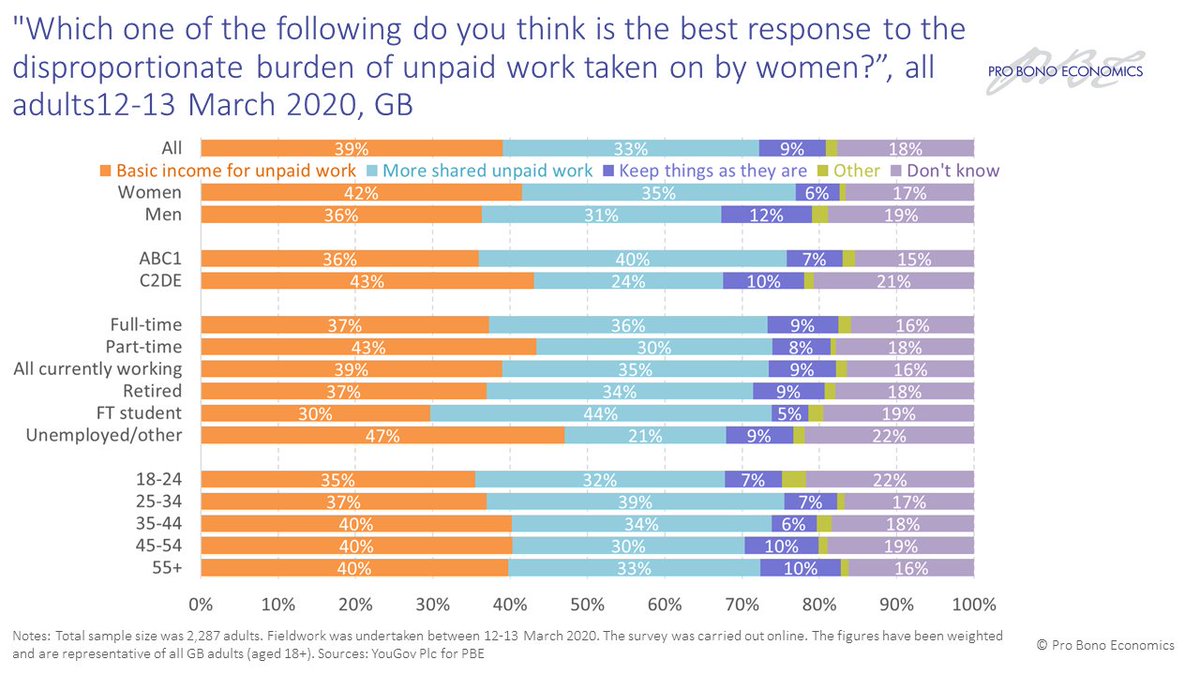New @ProBonoEcon report on the progress made on paid and unpaid gender work gaps over the last half century - and on the work still to be done.
1/ Highlights dramatic narrowing of paid employment gap from 38 percentage points in 1972 to 8ppts in 2019
https://www.probonoeconomics.com/women%E2%80%99s-work-policy-pay-progress-and-penalties-remain">https://www.probonoeconomics.com/women%E2%...
1/ Highlights dramatic narrowing of paid employment gap from 38 percentage points in 1972 to 8ppts in 2019
https://www.probonoeconomics.com/women%E2%80%99s-work-policy-pay-progress-and-penalties-remain">https://www.probonoeconomics.com/women%E2%...
2/ Simultaneous narrowing of the employment gap and the average hours gap has increased the overall share of paid employment accounted for by women from 27% in 1972 to 41% in 2019. Sustained indefinitely, that trend would mean women accounted for a majority of paid hours by ~2045
3/ Despite these gains, the gender gap in the quality of paid work remains far too large. Women account for 74% of those working part-time, 54% of employees with a temporary contract, 56% of those on a zero-hours contract and 61% of low-paid employees
4/ Women’s low pay prevalence is reflected in their wage distribution, with much more of a clustering than for men around the wage floor. And at the top end, 6 per cent of male employees earn £36 or more each hour, compared to just 2.2 per cent of female employees
5/ The gender pay gap has narrowed over time, but progress has slowed over the last decade. Headline gap between median full-time male and female hourly pay fell from 17.4% in 1997 to 10.1% in 2010: but it has drifted only marginally lower since, standing at 8.9% in 2019
6/ Improvements have been recorded across age bands (with the gender pay gap all but eliminated at younger ages), but there remains a step change as women move from their 30s to their 40s
7/ A sizeable gap remains even after controlling for personal (eg age, qualification, parental status) and work (eg industry, occupation, sector) characteristics: i.e. women suffer a 6.3% pay ‘penalty’ even when compared with broadly similar men. And it is much bigger for some
8/ The penalty faced by women, especially mothers, in part reflects the longer hours they commit to unpaid tasks like childcare, cooking and volunteering. The unpaid gap between men and women has narrowed, but overall women on average work longer weeks today than men did in 1975
9/ With today’s turmoil offering the potential for a re-drawing of the social contract, it is interesting to see the level of public appetite for change. Just ahead of lockdown, 54% said they’d reveal their pay if it aided more equal pay for women: rising to 61% for the under-45s
10/ And just 9% said they wanted to maintain the current uneven balance of unpaid work between men and women, with 39% saying their preferred response was some form of basic income.
Lots to reflect on, especially in a very different future landscape.
https://www.probonoeconomics.com/women%E2%80%99s-work-policy-pay-progress-and-penalties-remain">https://www.probonoeconomics.com/women%E2%...
Lots to reflect on, especially in a very different future landscape.
https://www.probonoeconomics.com/women%E2%80%99s-work-policy-pay-progress-and-penalties-remain">https://www.probonoeconomics.com/women%E2%...

 Read on Twitter
Read on Twitter